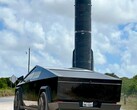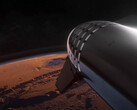While talking about the first reusable spaceship achievement, and the fact that its tonnage costs for a trip to Mars need to be much lower, Elon Musk casually mentioned that he envisions the first manned Starship flight to Mars will happen in 2028.
First, however, SpaceX will use the next available window for a Mars flight in 2026 to send a Starship without a crew to test all the landing assumptions that the space company has been researching in the past few years. If all goes well, SpaceX will use every successive time slot that is suitable for a Mars flight to send more people, and create the first "self-sustainable" city on Mars in about 20 years.
While all this may sound like a lofty State of the Union address, for Elon Musk interplanetary flights and life on other celestial objects boil down to "a cost per ton to Mars problem." With the current SpaceX Starship iteration, that cost is a staggering $1 billion per ton, and it needs to go down to just $100,000/ton for a trip to be commercially viable.
"Being multiplanetary will vastly increase the probable lifespan of consciousness, as we will no longer have all our eggs, literally and metabolically, on one planet," is Musk's main argument when he has to defend the exorbitant costs and risk involved in trying to colonize other planets, even one as close as Mars. According to Elon Musk's biography by Walter Isaacson, he began banging the space drum in 2001 when he was shocked to discover that NASA has no real plans for a Mars mission.
After establishing SpaceX, they chose Mars for the first interplanetary colony mission because of the CO2-laden atmosphere able to sustain plant life when compressed, a comparable day length, and the fact that gravity is less than half of that on Earth so that humans there would be able to "lift heavy things and bound around."
The Starship's reusable tanks will be refilled with fuel in Earth's orbit so that it can carry up to 100 tons of equipment back to Mars, while its heat shield is designed for multiple reentries at 7.5km/s with aerodynamic deceleration.
The only thing left for Musk to announce now is whether the first Mars mission of SpaceX's Starship in the self-imposed deadline of 2026 will include Optimus robots as well.
























